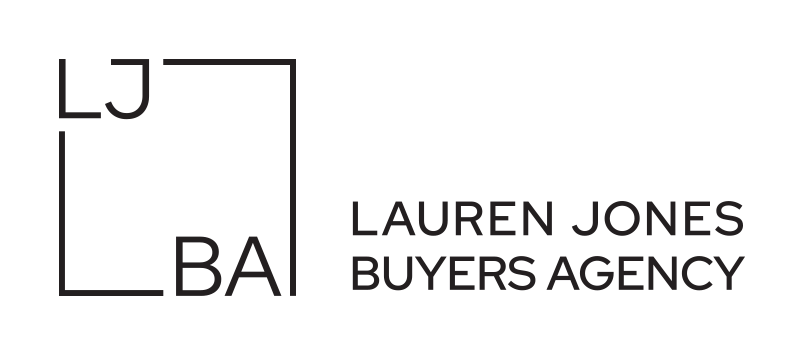Are you being thrown into the world of property inspections for the first time? Feeling overwhelmed about what to look out for beyond the surface charm of a home? Fear not, as north Brisbane buyers agent Lauren Jones discloses all the nitty-gritty to look out for during property inspections.
Beyond the Facade
Conducting property inspections unveils the pesky, hidden flaws of a building that might escape the untrained eye. While the interior design and styling of a property for sale might catch your attention, there’s more to its worth than meets the eye. So, look beyond the leather recliners in the living space and the ensuite’s spotless, marble finish. Such value only exists on a property’s shiny surface.
If you want to steer clear of unforeseen costs and future troubles, it’s imperative to discover the true condition of a property before making the big purchase. Simple maintenance checks during inspections could be the line between a dream home and a costly nightmare.
Our rule of thumb at Lauren Jones Buyers Agency: Don’t seal the deal without knowing your prospective purchase is the real deal!
Pre-Inspection Preparation
Before you even consider setting foot on a property, always do your homework:
- Aeriel Map Check: Ensure the property isn’t too close to train lines or motorways. LJBA recommends using Google Earth.
- Flood Zone Check: Especially in Brisbane and surrounds, it’s imperative to make sure your prospective property does not lie in a high-risk flood zone. Miss Jones recommends using Brisbane City Council’s Flood Awareness Map.
- Speak to the Agent: You should never attend a property inspection without first talking to the sales agent. This can be as simple as a quick phone call, used to gather vital information such as the property’s target price range, if it is already under contract, if there is a tenant in place, and any issues they can disclose about the property.
- Location and Amenities: Main roads and flood zones set aside, conduct research into the desirability of the property’s location. Consider its proximity to local amenities such as public transport, schools, shops, recreational parks and facilities, medical centres, and your workplace. Remember, you can redesign a living space, but you can’t relocate the property itself.
10 Key Areas of Property Inspection
Property inspections are often fleeting, demanding a keen eye and focused attention to detail. Here’s a detailed breakdown of what to look for:
- Is there enough storage space and parking?
Evaluating storage space and parking at a property inspection is crucial because it directly impacts daily convenience and long-term practicality for residents. Sufficient storage reduces clutter and enhances organisation, while ample parking ensures hassle-free vehicle accommodation for residents and guests alike. - How is the property positioned on the block?
Ideally, due to the hot summer months Brisbane residents must endure, Brisbane properties should adhere to certain orientations. North-facing backyards are the most desirable, with south-facing yards only desirable depending on the internal layout of living spaces. As well, too many west-facing windows may cause properties to become too hot in summer. A property’s orientation also impacts the wealth of natural light a property has access to. Brisbane Buyers Agent Lauren Jones suggests to attend inspections at untimely hours, to assess the property’s true access to natural light. - Is asbestos present?
Most Australlian houses built before the 80s will have some form of asbestos hiding in them. Generally, asbestos is found lurking in wet areas like laundries and bathrooms, in rooves or wall sheets. It is best to have a professional conduct a thorough inspection for peace of mind. - Are there signs of pests?
We asked LJBA’s trusted, go-to expert on the matter, Anthony Bartzis from Southern Cross Building Inspections, for his advice on how to determine whether a property is at risk of infestations. Anthony shared that the most common pest affecting property owners across South East Queensland is termites, which can go for years undetected. Anthony estimates that 100,000 homes suffer from termite activity each year in Australia, costing home owners thousands of dollars in repairs. Key signs of termite activity Anthony discovers during timber pest inspections are ‘mud tubes’ or tunnels built into termites’ entry of a dwelling, areas of damaged wood, or distorted timber surfaces. A timber pest inspection will determine the presence of termites, borers and wood decaying fungi and provide commentary on maintenance and remediation works where appropriate.
As well, Lauren suggests looking for signs of existing pest control measures. This may appear in the form of termite barriers or stickers indicating existing termite prevention strategies in the electrical meter box.
- Are there issues with drainage?
Inspect for any cases of water pooling or dripping, especially under the house or on patios, as this indicates inefficient drainage. Lauren Jones offers the unique advice to opt for inspecting properties in the rain, as it becomes much easier to spot drainage issues in wet weather.
- Can you detect any water damage?
Check ceilings and walls for stains, mould, or signs of water damage and corrosion. According to LJBA’s Jessica Giandomenico, the “smell of damp” is a huge giveaway that water damage is present. Ensuring ceilings don’t have a sagging ‘parachute’ appearance is another great method. You can also shine a torch across ceilings in order to spot any deflections in the ceiling sheets that are indicative of underlying issues. - Do all balustrades adhere to legal requirements?
Whether internal or external, you must ensure that a property’s balustrades adhere to Australian Standards, which have prescribed the safe height of 1.0m above the surface. As an investor, if your tenant falls, and you have not ensured building compliance, that risk could be on you. A professional building inspector will be the right person to inform you of whether they are up to code.
- Are there issues with pool safety?
Always, always, always verify the presence of a pool safety compliance certificate prior to going unconditional on a property that has a pool. During a property inspection is the perfect time to tick this off your risk list, while also checking for leaks in and around the pool area. - Are there cracks in the plastering?
Be on the lookout for fine hairline cracks in the internal wall plastering, often referred to as map cracks, as they take on the appearance of a map. These cracks indicate an incorrect application of wall plastering. - Is the hot water system up and running?
Lastly, you must evaluate the size and efficiency of the property’s hot water system. For instance, an 80-litre tank could not adequately support the household needs of a larger family. As well, you can turn on the taps and see how long it takes the water to heat up, in order to check the water pressure and hot water system efficiency in taps.
Buying Without the Bitter
Property inspections are more than just casual walkthroughs—they are strategic evaluations aimed at ensuring your property purchase is well-informed and worthwhile. By using this list to hone your inspection skills, you can confidently weed all lemons out of your prospective purchase list. Otherwise, do consider engaging the assistance of a buyers agency—such as Lauren Jones Buyers Agency—to help streamline and simplify this crucial step of your property purchase journey!

